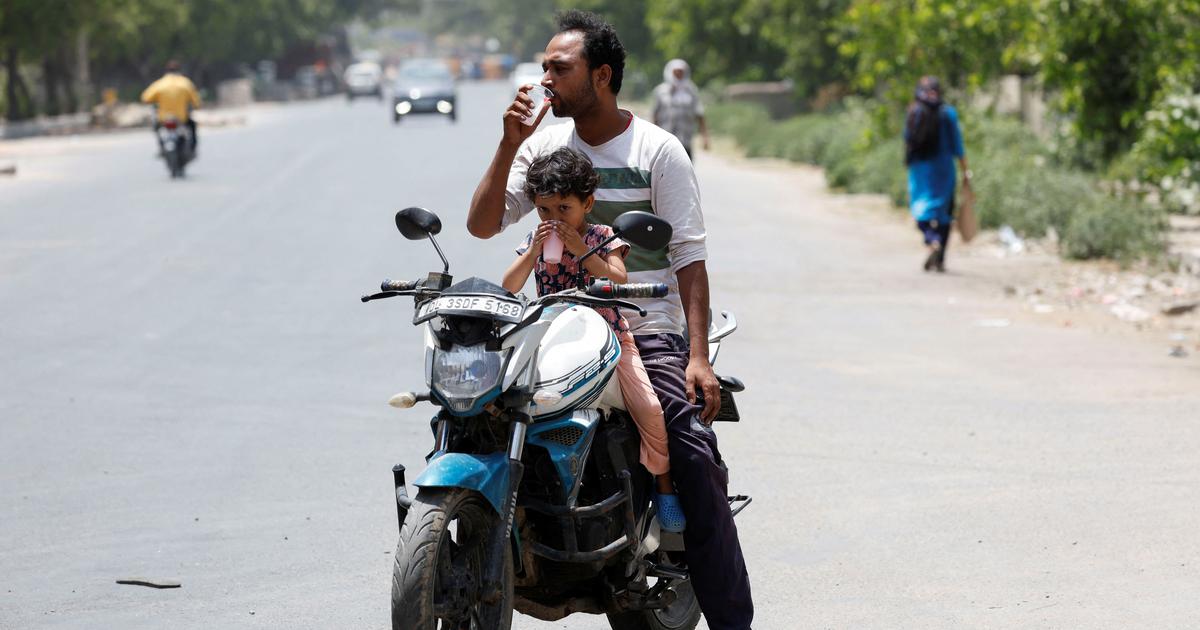Delhi’s Mungeshpur area experienced a sweltering 52.3 degrees celsius on Wednesday, the highest temperature ever seen in the city, according to the Indian Meteorological Department (IMD).
Officials believe that this degree of extreme temperature difference between Mungeshpur’s 52 degrees and the surrounding locality’s 49 degrees is very unlikely and attribute it to a possible fault in the local temperature sensing system. Union Minister for Earth Sciences Kiren Rijiju took to X later on Wednesday to say “It is not official yet. Temperature of 52.3°C in Delhi is very unlikely. Our senior officials in IMD have been asked to verify the news report. The official position will be stated soon.”
However, record-breaking or not, there is not a single doubt that Delhi, and most of Northern India, is going through one of the worst heat waves in recent history. In most places, maximum temperatures have flown 5 to 6 degrees above normal, and stayed there. The absence of record-breaking temperatures offers little comfort to those suffering from increasingly prolonged and severe heatwave conditions.
A UK-based publication focused on climate change, Carbon Brief, revealed last year that nearly 40% of the Earth experienced its highest-ever daily temperatures between 2013 and 2023. This alarming trend includes locations in Antarctica. During this period, India’s highest recorded temperature was also observed in Phalodi, Rajasthan.
Aarti Khosla, director of Climate Trends, a climate organisation, said “It is very concerning that annual trends in heatwaves now show temperature departures of 5-9 degree Celsius from the normal summer weather… Heatwaves are clearly the single largest threat to India’s well-being today.” “Temperatures in Delhi and neighbouring NCR states in the last two days are proof that the issue is now about survivability,” she further states.
According to a 2023 Report of Lancet Countdown, the number of people exposed to extreme heat is rapidly increasing across all world regions. Between 2000-2004 and 2017-2021, heat-related mortality among individuals over 65 years old rose by approximately 85%. Further studies indicate that between 2000 and 2019, approximately 489,000 heat-related deaths occurred annually, with 45% of these in Asia and 36% in Europe.
It is no secret that extreme heat causes extreme health complications too. Health authorities are urgently warning about the severe risks extreme heat poses to human health and well-being. Beyond causing life-threatening conditions like heatstroke, intense heat can aggravate chronic illnesses. The profound impact of extreme heat should be taken seriously.
How Does Heat Impact the Human Body?
The human body’s heat storage is influenced by a blend of factors: Firstly, environmental heat stress hampers the body’s ability to shed internally generated heat, caused by metabolic processes like high temperature, humidity, low wind, and thermal radiation. Secondly, clothing acts as a shield hindering heat dissipation, and thirdly, there’s external heat absorption from the surroundings.
When the body struggles to regulate its temperature and dissipate excess heat, it becomes susceptible to heat exhaustion and heatstroke. This strain not only burdens the heart and kidneys but also exacerbates health risks linked to chronic ailments like cardiovascular issues, mental health conditions, respiratory problems, and diabetes, and may lead to acute kidney injury.
“The systems in the human body that enable it to adapt to heat become overwhelmed,” said Mike McGeehin, director of the Centers for Disease Control and Prevention’s Environmental Hazards and Health Effects Program, “When a person is exposed to heat for a very long time, the first thing that shuts down is the ability to sweat. We know that when perspiration is dried by the air there is a cooling effect on the body. Once a person stops perspiring, in very short order a person can move from heat exhaustion to heat stroke.”
McGeehin further goes on to state that early indicators of heat stress include heat rash and muscle cramps, which can stem from various factors, including inadequate delivery of electrolytes to the muscles. This, if left unaddressed, can progress to more severe symptoms. It’s crucial for individuals to recognize signs such as reddening and drying of the skin, as they signify the impact of heat on the body.
How to Protect Yourself in the Midst of a Heatwave?
Harness the cooling power of the night air by opening windows after dusk when outdoor temperatures drop below those indoors. During daylight hours when it’s hotter outside, keep windows closed and use blinds or shutters to block direct sunlight. Minimise electrical device usage to reduce heat generation.
If resorting to air conditioning, set the temperature to 27˚C and pair it with a fan. This combination not only creates a sensation of being 4˚C cooler but can also slash cooling-related electricity expenses by up to 70%. When temperatures are below 40˚C, use fans for cooling. However, in temperatures exceeding 40˚C, fans may actually contribute to heat buildup. “Not only does it not work, it actually makes it worse,” says McGeehin. “We compare it to a convection oven. By blowing hot air on a person, it heats them up rather than cools them down.”
Stay cool and comfortable during hot weather by wearing loose-fitting clothing and lightweight bed linens. Refresh yourself with cool showers or baths, and keep your skin damp with a wet cloth or light, moistened clothing. Hydration is key, so make sure to drink water regularly, aiming for at least one cup per hour and 2–3 litres per day. Additionally, remember to check in on vulnerable members of your community, especially those over 65 years old or with pre-existing health conditions, disabilities, or who live alone, to ensure their well-being during hot spells.
To protect infants and children from the heatwave, always refrain from leaving children or pets unattended in parked vehicles, as temperatures can rapidly escalate to dangerous levels. Minimize direct sun exposure during peak hours by seeking shade or remaining indoors. Shade can reduce perceived temperatures by over 10°C. Avoid covering infant strollers or prams with dry fabric, as this increases internal heat. Instead, utilize a damp, lightweight cloth and reapply moisture as needed to decrease the temperature.



